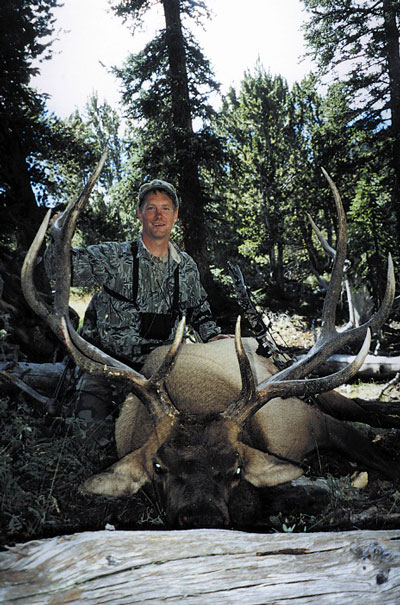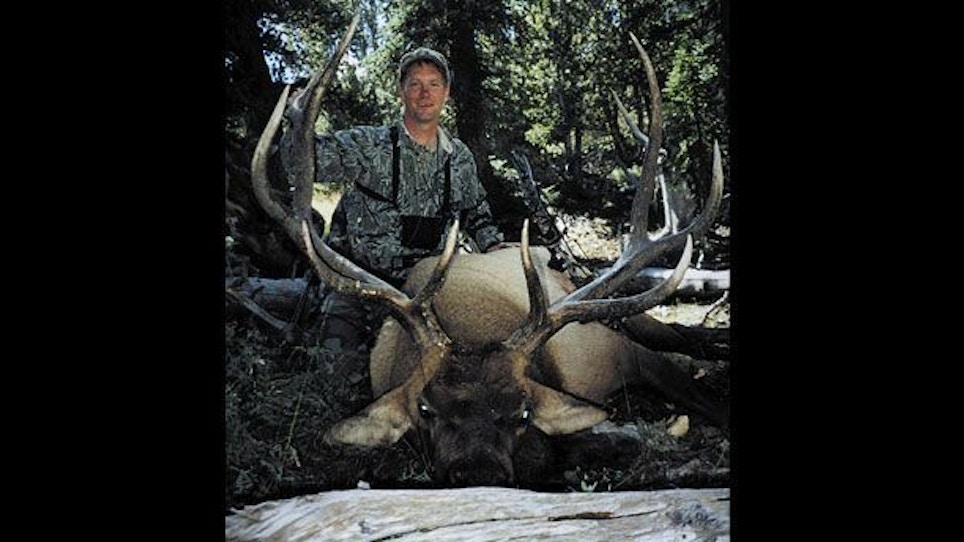Previously: Set A Budget, Driving Has Its Advantages
 Extra Equipment Saves The Hunt
Extra Equipment Saves The Hunt
After spending months preparing for a trophy elk hunt with one of Wyoming’s premier outfitters, I found myself in camp the day before the hunt with a damaged bow and 40 minutes of daylight. At 30 yards, I would have been doing well to hit the Boeing 747 I had flown on earlier that day—much less an elk. When my outfitter, Todd Jones of Paintrock Adventures, graciously volunteered to make the two-hour ride back to the trailhead to get my backup bow long after dark, I thought my luck was changing for the better. By the fifth day of the hunt, I was beginning to wonder.
During the first four days, we called-in numerous bulls to less than 50 yards, including a monster 6x6 at 8 yards, but I was still elkless. The wind was our greatest nemesis, though cows, sagebrush, rocks, blue grouse, and pine trees all teamed-up to help the elk at some point during the week.
When I thought no one could not be unluckier than I, early on the fifth day I reached for an arrow as we began to set up on a bull. I realized my hip quiver and arrows were missing. After 90 minutes of backtracking, I was initially delighted to spot my arrows on the ground beside the trail. Then I heard the distinctive and unpleasant sound of my horse stepping on my arrows and quiver.
On the sixth and final morning of my hunt, we bumped two bulls before 8 a.m., and I was beginning to wonder how many opportunities an individual could have on a six-day hunt. By 8:30 a.m. we began a 2-mile trek toward what could have been my last opportunity at a bugling Wyoming bull. We soon were within what we believed to be 200 yards of the bull’s location, but unfortunately he stopped bugling, and the thermometer was rising by the minute.
Throughout the week, the bulls had frequently bugled in the midday in what appeared to be an attempt to remind us they were still ahead of the chase. So, we decided to find some level ground and wait to see if this bull would give us his whereabouts during the lunch hour.
Sure enough, just after 11 a.m. we heard the bull about 120 yards above us. As we quickly set up, he declared war on a pine tree while letting everyone and everything know he was in charge of the herd. As Todd called, I started to move closer and closer. At approximately 70 yards, a cow appeared and walked through an opening to my right. After deciding the bull was likely to follow, I moved into position and waited as my heart pounded. Either a minute or 12 hours later (it is difficult to judge time when a Pope & Young bull is headed your way), the bull walked into an opening, stopped broadside, and presented me with the perfect shot opportunity. By 11:15 a.m. it was over—I had harvested a 300-plus Pope & Young bull. To this day I am without words to properly describe the moment.
Bring Duplicates, Get In Shape
After recently reminiscing with Todd Jones, I realize I was very fortunate to have a successful 1998 elk hunt, and I learned some valuable lessons. First and foremost, if there is a chance equipment will break or you may lose it, take two (or more). I always take a backup bow, two releases, extra arrows, and two of anything that I cannot do without. Quality elk hunting is never 30 minutes from town. If you damage your bow, it may take two days to get to town and back, not counting a half-day to shoot and sight in your bow. Even on a 10-day hunt, you cannot afford to lose two or three days.
Immediately after booking your hunt, start getting in shape physically and mentally. I personally believe the greatest obstacle in harvesting an elk with a bow is the inability to endure the physical demands of a hunt. How many Eastern whitetail hunters do you know who ride their ATVs to within eyesight of their treestand, hunt until mid-morning, then return to the house or camp for lunch and a nap? That just won’t be the case if you are seriously pursuing a quality bull. A Western bull elk hunt begins and ends in the dark. It’s a high-altitude, rocky and rugged ride, for sure.
If you are considering an elk hunt, see your family physician and begin an exercise regimen. Start out slow and build yourself up gradually. Set progressive weekly goals that can be reached. If you begin by walking 15 minutes a day for a week, you may want to try walking 20 minutes next week and continue increasing your goals until you are running and climbing hills for extended periods.
In any event, you want to be in the best shape possible by the time you leave for the hunt. As Todd Jones told me, “There’s no need to beat around the bush and let a hunter find out the hard way on the first day of the hunt. A hunter who does not prepare for the hunt physically and mentally is short-changing himself.”






